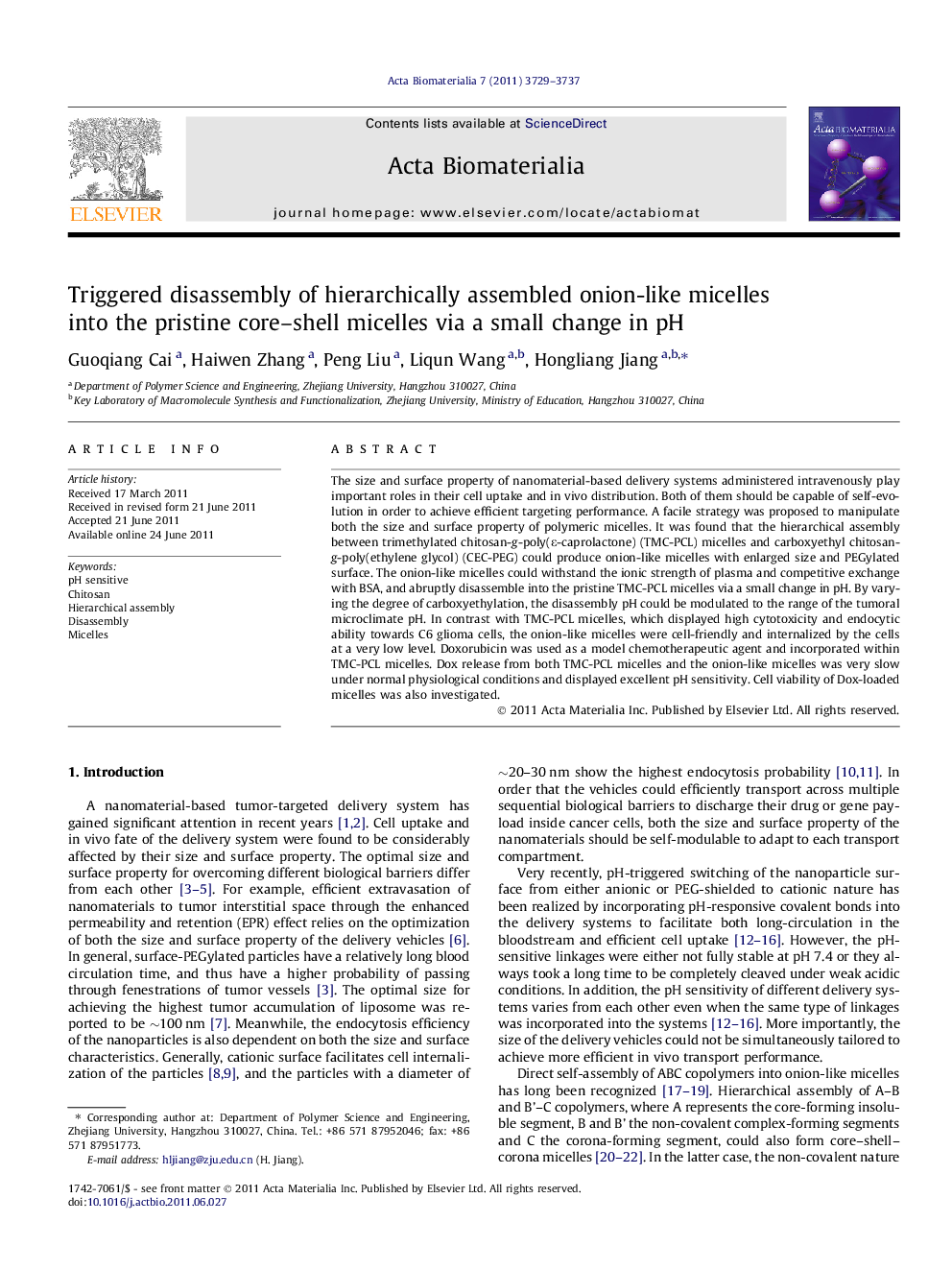| Article ID | Journal | Published Year | Pages | File Type |
|---|---|---|---|---|
| 754 | Acta Biomaterialia | 2011 | 9 Pages |
The size and surface property of nanomaterial-based delivery systems administered intravenously play important roles in their cell uptake and in vivo distribution. Both of them should be capable of self-evolution in order to achieve efficient targeting performance. A facile strategy was proposed to manipulate both the size and surface property of polymeric micelles. It was found that the hierarchical assembly between trimethylated chitosan-g-poly(ε-caprolactone) (TMC-PCL) micelles and carboxyethyl chitosan-g-poly(ethylene glycol) (CEC-PEG) could produce onion-like micelles with enlarged size and PEGylated surface. The onion-like micelles could withstand the ionic strength of plasma and competitive exchange with BSA, and abruptly disassemble into the pristine TMC-PCL micelles via a small change in pH. By varying the degree of carboxyethylation, the disassembly pH could be modulated to the range of the tumoral microclimate pH. In contrast with TMC-PCL micelles, which displayed high cytotoxicity and endocytic ability towards C6 glioma cells, the onion-like micelles were cell-friendly and internalized by the cells at a very low level. Doxorubicin was used as a model chemotherapeutic agent and incorporated within TMC-PCL micelles. Dox release from both TMC-PCL micelles and the onion-like micelles was very slow under normal physiological conditions and displayed excellent pH sensitivity. Cell viability of Dox-loaded micelles was also investigated.
Graphical abstractFigure optionsDownload full-size imageDownload high-quality image (70 K)Download as PowerPoint slide
